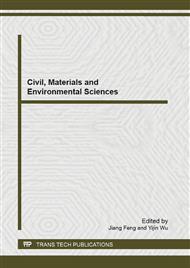p.367
p.371
p.379
p.384
p.388
p.392
p.398
p.404
p.410
Effect of Enhanced Conditions (C, N and Ultrasonic Power) on the Biodegradation of Mixed Endocrine Disrupting Compounds by Pseudomonas putida
Abstract:
Endocrine disrupting compounds (EDCs), such as estrone (E1), estrodiol (E2), estriol (E3), 17α-Ethynylestradiol (EE2) and bisphenol A (BPA) were biodegraded by Pseudomonas Putida. Under the fixed conditions of inoculums size and substrate concentration, the influences of enhanced conditions, such as carbon source, nitrogen source and ultrasonic power, had been investigated. The biodegradation rates of EDCs have increased by 16.98-40.15% and 18.37-24.86% after adding carbon source and nitrogen source, respectively. Ultrasonic power can improve the biodegradation rate by 14.09-24.66%. Meanwhile, the biodegradation rate could be up to about 90% under the external conditions. The study provided a basis for the enhance control of EDCs and other contaminants.
Info:
Periodical:
Pages:
388-391
Citation:
Online since:
August 2013
Authors:
Price:
Сopyright:
© 2013 Trans Tech Publications Ltd. All Rights Reserved
Share:
Citation:


